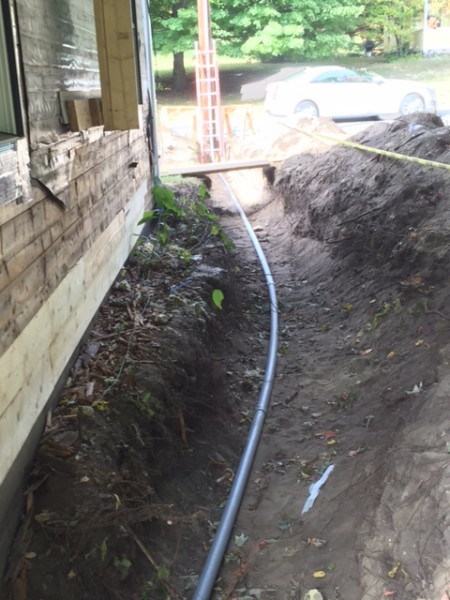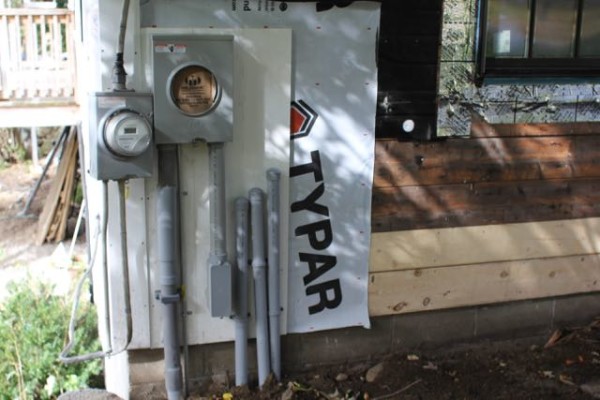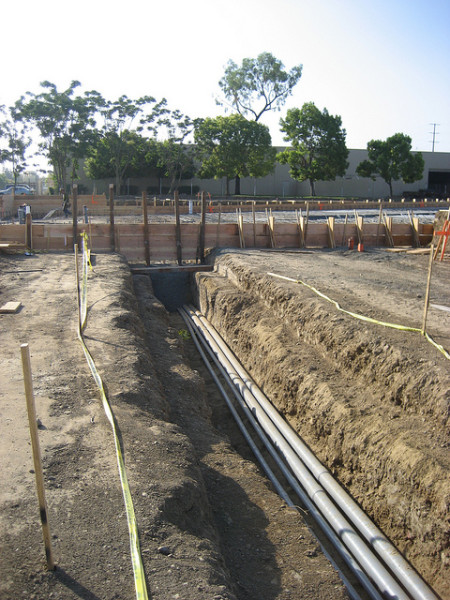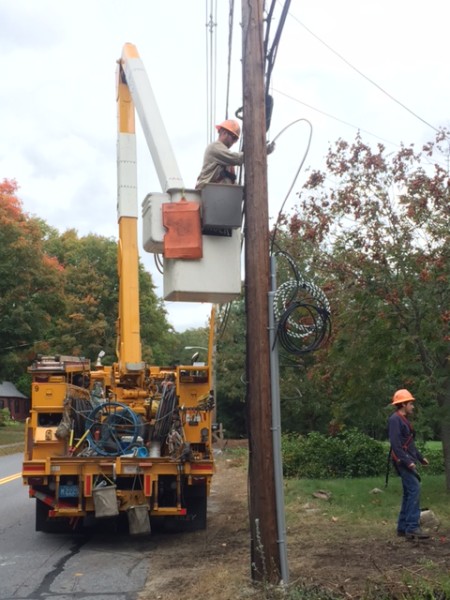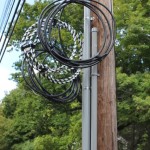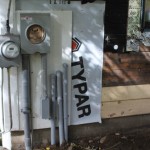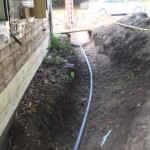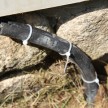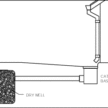Benefits to Installing Utility Wires Underground
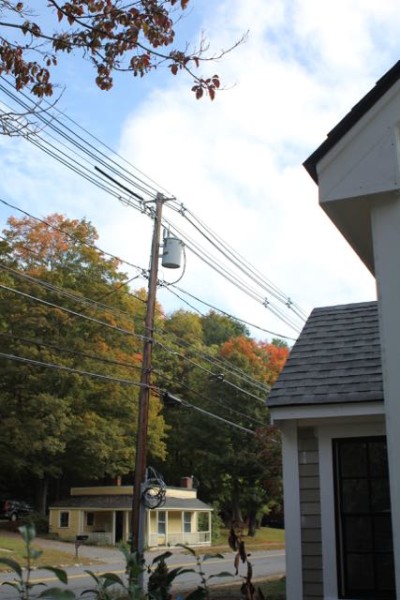 A Guide to Trenching and Installing Underground Utilities in your Home
A Guide to Trenching and Installing Underground Utilities in your Home
Few improvements enhance the appearance of the neighborhood or home then removing overhead wires.
If you are building a project or remodelling your home, it may be necessary or make sense, to dig a trench to bury existing utility wires or to upgrade existing services. Here are some benefits:
- One trench can does it: gas and electricity services are often installed in the same trench as well as other services like telephone and cable
- Power reliability: reduction in the chance of exposure of power outages from fallen limbs and ice storms
- Reduces the risk of live-wire contact
- Increases curb appeal: removing overhead wires eliminates any major eyesore.
- Reduces tree pruning costs associated with overhanging wires
- Less penetrations going into the house reducing areas of water and insect infiltration
Underground Conduit
Underground electrical wiring, is permitted to be directly buried or installed in a raceway. Most folks us polyvinyl chloride (PVC) conduit. A conduit is electrical tubing into which it is intended for electrical wires and cables; a raceway is any channel designed for holding wires or cables.
Conduit approved for underground installations is permitted to be direct-buried or encased in poured concrete to provide mechanical protection.
Cost
The cost of putting utility wise underground varies greatly from project to project; A good estimate is somewhere between $4500 and $20,000 depending on how far how far and how long the utilities are traveling underground.
If you thinking about putting your utilities underground this is a good time to consider upgrading your electrical service, for example, if you currently have 100 Amps coming to your house, consider putting in a 200 Amp service. If you do this, you will need a new electrical service box and require some additional electrical work on the inside of the house, but it’s well worth the investment.
Minimum depth depth requirement for electrical conduit
Installing utilities underground means that you have to dig a trench from the power source, or utility pole to the house electrical meter location.
If you choose to dig the trench by yourself, make sure that you follow certain technical standards required by your state jurisdiction, electrical code. The trench will need to be inspected prior to filling it back in, to make sure that is deep enough and that the approximate number of conduit was properly installed
Dig safely
Before digging it is important to locate all the utilities existing underground, so that you do not have an accident when digging. Call dig-safe or dial 811 to be connected to your local service. This is a free service and other utilities come out to locate and mark underground utility wires, water and gas lines. This will help you avoid damaging the existing utility equipment underground when you dig.
Follow State Electrical code for trench depth
It is important to check your local codes, and call your local utility company and explain the project of them. For example, if you’re running conduit underneath a driveway a building or anywhere there might be vehicle traffic traveling over there are certain conditions you must follow. If you’re simply just digging a trench onto a residential property for a one and two family dwelling, here are the core requirements to follow:
- direct burial cables or conductors need to be 18 inches deep
- Rigid metal conduit or intermediate metal conduit needs to be 18 inches deep
- Non-metallic raceways listed for direct burial with out concrete encasement or other approved raceways need to be 18 inches deep
- Residential branch circuits rated 120 Volts or less with GFC I protection and maximum over-current protection of 20 Amperes needs to be 12 inches deep
- Circuits for control of irrigation and landscape lighting and no more than 30 volts and installed with Type UF or in other identified cable or raceway need to be 6 inches
- If the trench is dug through rough, rocky terrain, the conduit must be bedded with a minimum of 4” of sand
- All conduits must be gray Schedule 40 electrical PVC
In my jurisdiction the town requires that we install four separate conduits which are compliant with the Massachusetts electric code. The four conduits to include one for electrical service, one for telephone, one for cable and one for future communications. We have to install 18 inches deep and run the conduit approximately 10 feet up the utility pole, if present.
Pedestrian safety
Make sure the trenches me a pedestrian or vehicle traffic are barricaded or take it with warning tape to ensure safety
Utility separation
Provide at least 3 feet of horizontal separation from trenches containing propane lines and sewer, water, or storm drain lines since these are not committed any multiple utility trench.
Back-fill
That’s all must provide a smooth bedding area for the utility lines and supply at least 12 inches of cover on the conduit or pipe. Make sure to use permitted material. Sand is recommended and mostly used.
- mylightyearwarranty.com



